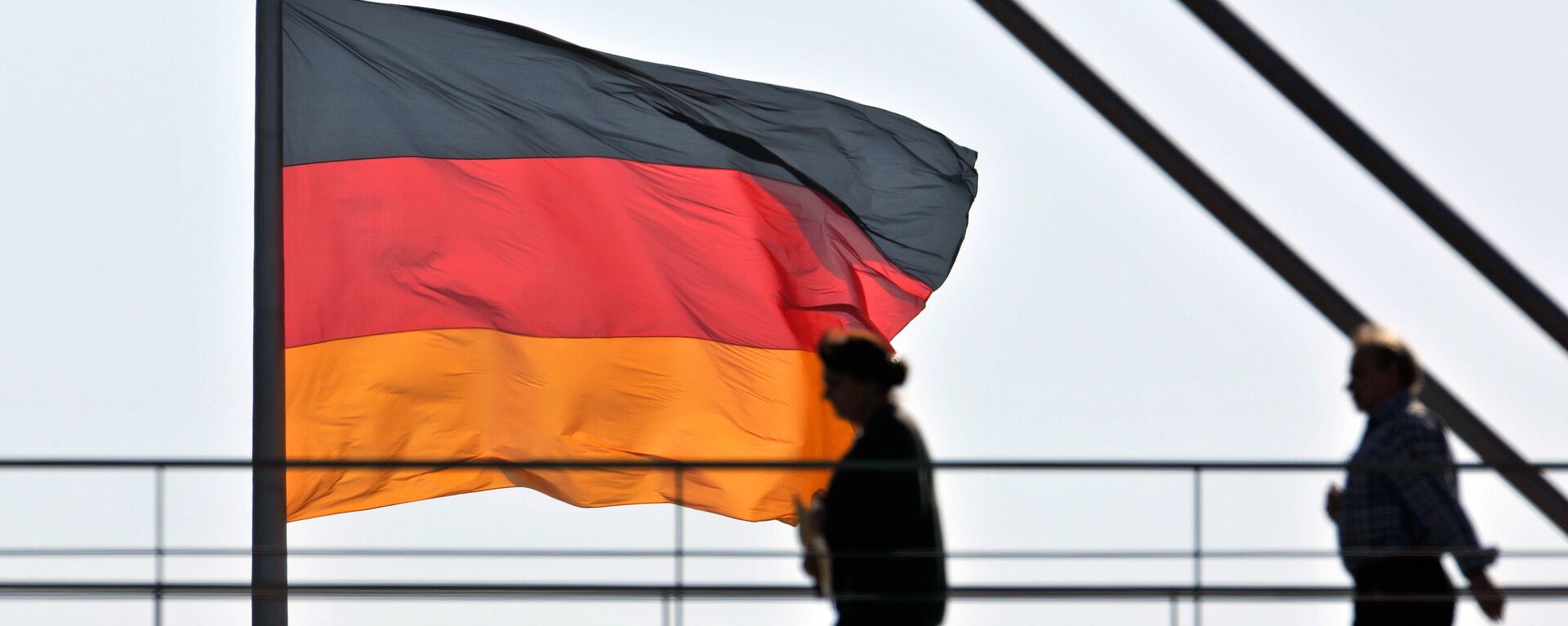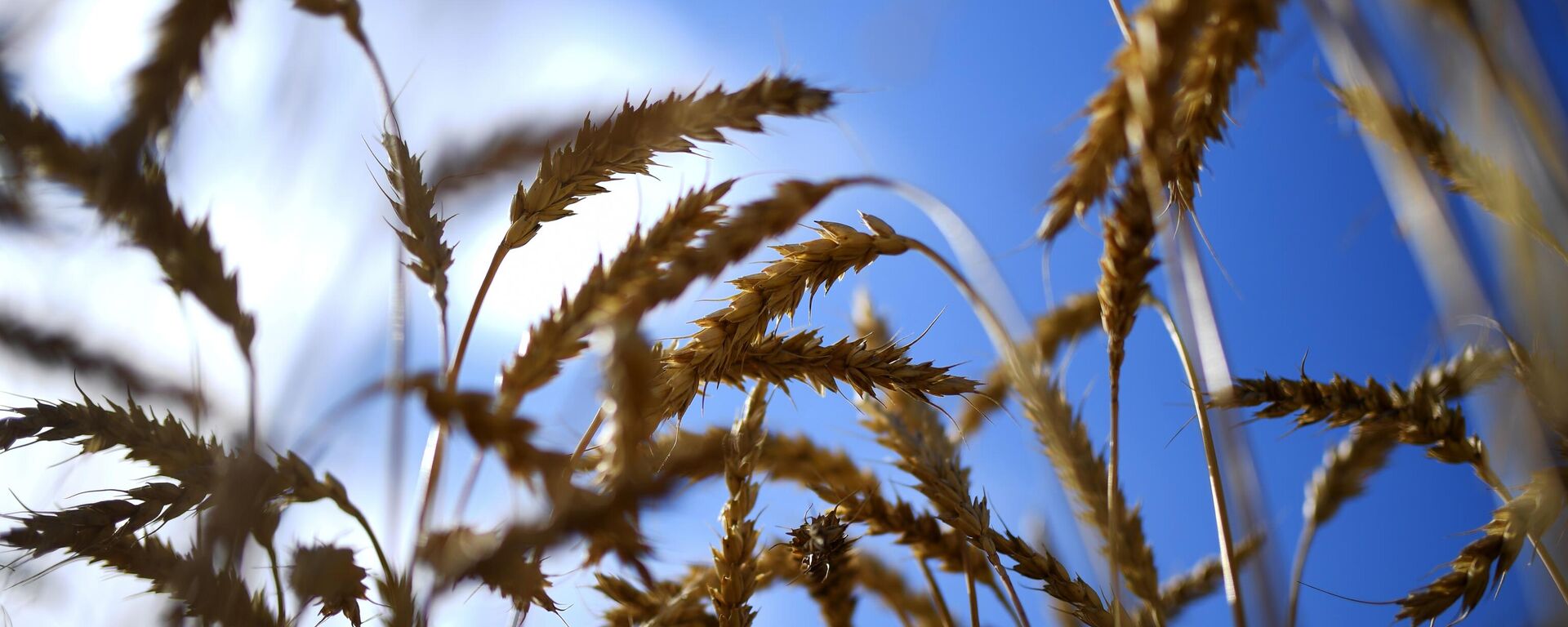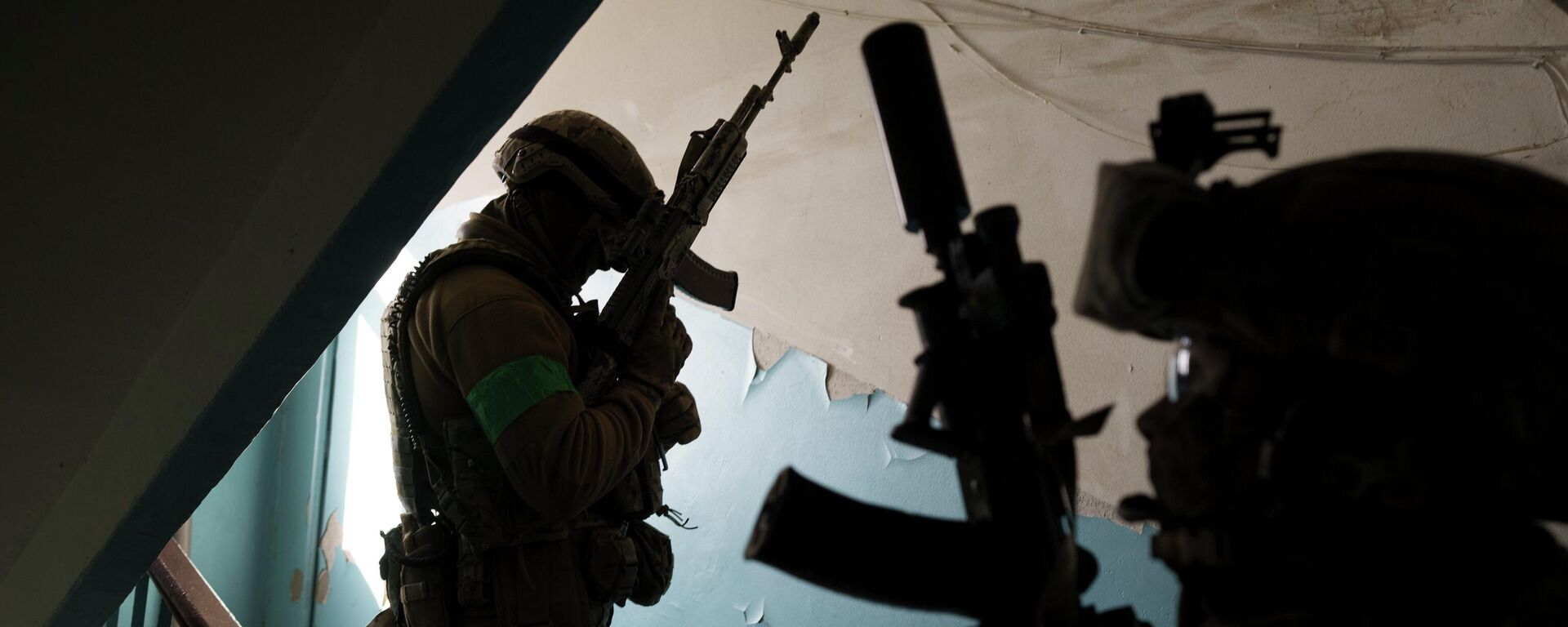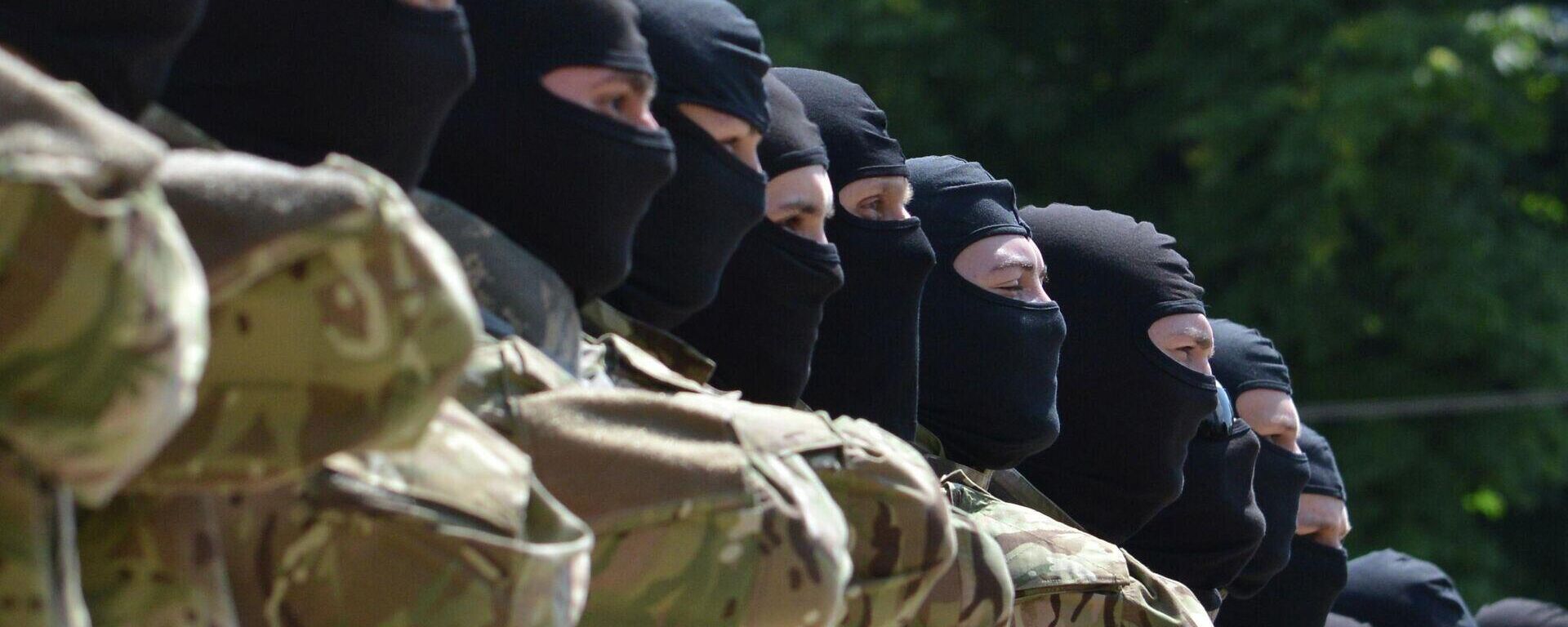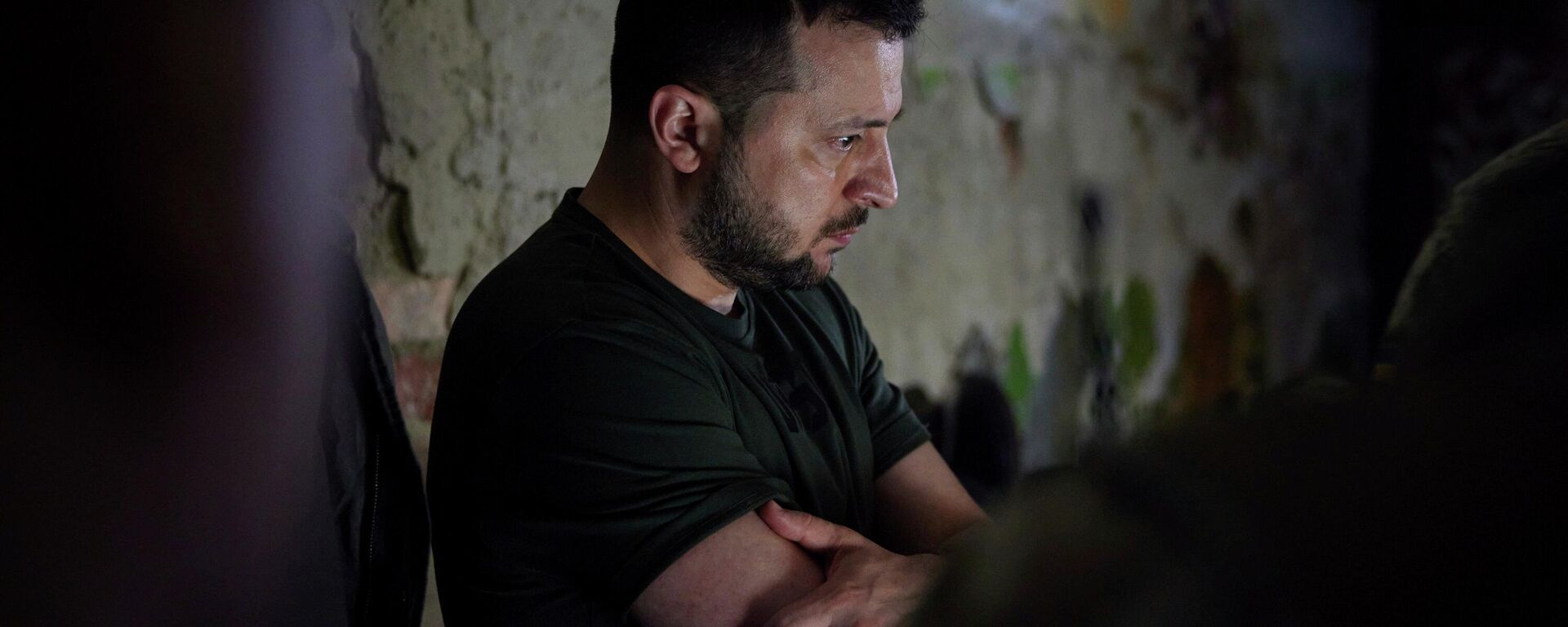https://sputnikglobe.com/20230718/zelenskys-ingratitude-ukraine-fatigue-steadily-increasing-in-europe-1111968837.html
Zelensky's Ingratitude: Ukraine Fatigue Steadily Increasing in Europe
Zelensky's Ingratitude: Ukraine Fatigue Steadily Increasing in Europe
Sputnik International
The latest NATO Summit in Vilnius exposed Ukraine fatigue, with UK Defense Minister Ben Wallace and US National Security Adviser Jake Sullivan lecturing Kiev over its ingratitude.
2023-07-18T17:22+0000
2023-07-18T17:22+0000
2023-07-18T17:22+0000
europe
volodymyr zelensky
ben wallace
jake sullivan
ukraine
kiev
the european central bank (ecb)
nato
poland
nazi
https://cdn1.img.sputnikglobe.com/img/07e7/07/0d/1111855778_0:0:3072:1728_1920x0_80_0_0_d6d22d43f42735bc7ce20f56ccd9f660.jpg
Top US and British politicians responded toughly to Ukrainian President Volodymyr Zelensky's criticism of NATO's hesitance to immediately welcome Ukraine within its ranks. "Whether we like it or not, people want to see a bit of gratitude," UK Defense Minister Wallace said. While speaking to reporters in Vilnius, Wallace recalled that every time Kiev received new Western weaponry, they immediately lobbied for more: "I told [Ukrainians] that last year, when I drove 11 hours to be given a list, that I’m not like Amazon," the British minister said.Economic Slowdown Facilitates Ukraine FatigueThe accusations of ungratefulness voiced by Wallace and Sullivan "bore the hallmarks of a scripted public pushback on Kiev," as per the Western mainstream press.Last year, the Western media warned that Zelensky had been increasingly misreading the changeable public mood in Western and Southern Europe while demanding more and more suppliesfrom his NATO patrons.Even though European pollsters claim that the public attitude to Ukrainians is still largely favorable, EU officials admitted in June that "there are some fears of wavering support" amplified by the economic slowdown and plummeting living standards that especially affect poor families in the Old Continent.In early June, the European press admitted that the Eurozone slid into a technical recession in the first three months of 2023, citing figures from Eurostat, the EU’s statistical agency. According to the agency, after revisions of earlier estimates, the bloc's GDP plummeted by 0.1% in the first quarter of 2023 and the final three months of 2022. Two consecutive quarters of negative growth are commonly considered to be a "technical recession." As per European financial experts, the bloc's economic growth is expected to slow to 0.9% in 2023 before rebounding by 1.5% in 2024 and 1.6% in 2025.Meanwhile, inflation in the Eurozone was 5.5% in June, still higher than the European Central Bank's (ECB) 2% target. The bank projects that headline inflation will decrease to 5.4% in 2023, 3.0% in 2024 and 2.2% in 2025. To tame inflation, the ECB has resorted to aggressive interest rate hikes, which, to some extent, strangulate the union's business activities and industrial rise. Last month, Italian Prime Minister Giorgia Meloni subjected the ECB and President Christine Lagarde to criticism, insisting that "the constant increase in interest rates is a more harmful cure than the disease."While Western and Southern European states have been suffering from a worsening cost-of-living squeeze exacerbated by the energy sanctions on Russia and a recession, central and eastern European states saw the demise of their agricultural sectors due to the Ukrainian grain glut. Instead of being transferred to the countries of Africa, Middle East and Central Asia within the so-called "solidarity lanes", most of cheap Ukrainian foods remained stuck in Europe, sending prices down and dealing a heavy blow to Central and Eastern European farmers.On May 2, the European Commission set restrictions until June 5 on imports of Ukrainian foods to ease the excess supply of the commodities in Bulgaria, Hungary, Poland, Romania and Slovakia.Nonetheless, on May 23, Eastern and Central European farmers took to the streets to protest against Ukrainian grain imports, which they say forced them out of their own markets.Europeans' Attitude to Ukraine ConflictAs per a June survey by DG COMM’s Public Opinion Monitoring Unit, 76% of Europeans approve of the bloc's support for Ukraine with disapproval being more widespread in southeastern areas of Europe. In particular, in Italy, 46% lack confidence in President Zelensky and just 34% have some, while 81% of respondents insist that the Ukraine conflict backfired on their country's economy.When it comes to military assistance, 56% of Europeans still support arms shipments to Ukraine, as per European pollsters. However, divisions are brewing with regard to the issue. While Poland, Lithuania, Czechia, Latvia, and Romania, mostly support sending weapons to Ukraine, France is divided, with 57% considering military support as beneficial and 43% concerned about the conflict spreading. In Germany, 43% of respondents believe that the current level of support is appropriate while 37% say it goes too far. 47% of Italians see sending F-16 fighter jets as a bad idea, while 23.6% approve of the move. In Spain, 61% approve of military support to Ukraine.At the same time, 55% of Germans say that their government could do much more to end the conflict diplomatically. In general, Europeans believe that the conflict will continue but have no illusions with regard to Ukraine's ability to prevail.Ideological Factor: Spector of Nazism Triggers ConcernsIt's not only the economic slowdown and market hurdles that risks facilitating Ukraine fatigue in Europe, but also an ideological factor. Like it or not, Ukrainians are continuing to propagate nationalist ideas closely connected with the figures of Second World War-era Nazi collaborators Stepan Bandera and Roman Shukhevych. In addition, the Ukrainian military and neo-Nazi battalions are openly using symbols that do not correlate with democratic values.In June, the New York Times lamented the fact that Ukrainian troops are using Nazi emblems and imagery "that the West has spent a half-century trying to eliminate." The media referred to the fact that Ukraine's Defense Ministry in April tweeted a photograph of a Ukrainian soldier wearing a patch featuring a skull and crossbones known as the Totenkopf, or Death’s Head. During WW2 this insignia was worn by a Nazi unit that committed war crimes and guarded concentration camps where millions of Jews had been brutally killed. After the US mainstream newspaper reached out to the Ukrainian Defense Ministry and asked about the notorious photo, the ministry rushed to delete it. The media reported that the soldier in the picture was part of a volunteer unit called the Da Vinci Wolves, which emanated from the Right Sector*, notorious for its ultra-nationalist propaganda and torture chambers.The US newspaper asserted to its readers that "the imagery has not eroded international support" for Ukraine and that even Jewish activists and anti-hate organizations "stayed silent" as they feared to play into Russia's hands. Nonetheless, Poland – the country that welcomed the lion's share of Ukrainian refugees – called upon Kiev in May to apologize for the Volhynia massacre, which saw up to 100,000 ethnic Poles – including children, women, and the elderly – murdered by the Organization of Ukrainian Nationalists (OUN) and its paramilitary wing, the Ukrainian Insurgent Army (UPA)*, between 1943 and 1944. Kiev refused to do so.Remarkably, the 80th anniversary of the Volhynia massacre, on July 11 coincided with the opening of the NATO summit in Vilnius. Even though Polish authorities tried to play down tensions with Polish President Andrzej Duda and his Ukrainian counterpart Volodymyr Zelensky attended an ecumenical commemorative mass in Lutsk Cathedral, the controversy lingers.To add more fuel to the flames, some Ukrainian refugees in Poland openly hail Bandera and Shukhevych, much to the frustration of ordinary Poles. Mysl Polska, a Polish newspaper, particularly wonders as to why Ukrainian President Volodymyr Zelensky, a Jew, tolerates glorification of Nazi collaborators in his country given that the Holocaust in Ukraine was carried out with the significant participation of Ukrainians in the German service. The newspaper added that Ukrainian nationalists also served as guards in the Nazi death camps in Poland (for example, in Sobibor, Treblinka) and in other European countries.According to European polls, 65% of Poles still believe that they should continue to help Ukrainians, while 35% disagree.Zelensky Changes ToneFollowing the backlash from the top British and American politicians, Zelensky changed tone and hastily thanked NATO leaders in a lengthy video clip shared on Twitter on July 13. Apparently, the Ukrainian president knows well that his political ambitions are closely dependent on the West's willingness to continue providing money and weapons to Ukraine. Still, upcoming elections in the US and Europe will show whether the public truly supports the political course of its leaders aimed at fanning the flames of the NATO proxy war "as long as it takes."*the Ukrainian Insurgent Army (UPA) and the Right Sector are banned in Russia as extremist organizations.
https://sputnikglobe.com/20230527/germanys-recession-is-eus-first-falling-domino-1110615851.html
https://sputnikglobe.com/20230715/five-eu-countries-urge-commission-to-extend-ban-on-imports-of-ukrainian-grain---budapest-1111899968.html
https://sputnikglobe.com/20230713/blood-on-the-walls-inside-ukraines-torture-chambers-1111796712.html
https://sputnikglobe.com/20230607/neo-nazi-symbols-on-ukrainian-troops-cannot-be-divorced-from-their-origin-1110985378.html
https://sputnikglobe.com/20220304/why-is-the-west-silent-about-ukrainian-neo-nazi-movements-azov-battalion--bandera-legacy-1093561142.html
https://sputnikglobe.com/20230713/what-lies-behind-zelenskys-nervous-response-to-nato-summit-1111854058.html
ukraine
kiev
poland
russia
Sputnik International
feedback@sputniknews.com
+74956456601
MIA „Rossiya Segodnya“
2023
News
en_EN
Sputnik International
feedback@sputniknews.com
+74956456601
MIA „Rossiya Segodnya“
Sputnik International
feedback@sputniknews.com
+74956456601
MIA „Rossiya Segodnya“
ukraine military aid, volodymyr zelensky nato, eu recession, eu inflation, european agricultural sector, ukrainian grain glut, sliding living standards in europe, lack of confidence in zelensky, ukraine conflict backfires on eu, anti-russia sanctions backfire on eu
ukraine military aid, volodymyr zelensky nato, eu recession, eu inflation, european agricultural sector, ukrainian grain glut, sliding living standards in europe, lack of confidence in zelensky, ukraine conflict backfires on eu, anti-russia sanctions backfire on eu
Zelensky's Ingratitude: Ukraine Fatigue Steadily Increasing in Europe
The latest NATO Summit in Vilnius exposed Ukraine fatigue, with UK Defense Minister Ben Wallace and US National Security Adviser Jake Sullivan lecturing Kiev over its ingratitude.
Top US and British politicians responded toughly to Ukrainian President Volodymyr Zelensky's criticism of NATO's hesitance to immediately welcome Ukraine within its ranks.
"Whether we like it or not, people want to see a bit of gratitude," UK Defense Minister Wallace said. While speaking to reporters in Vilnius, Wallace recalled that every time Kiev received new Western weaponry, they immediately lobbied for more: "I told [Ukrainians] that last year, when I drove 11 hours to be given a list, that I’m not like Amazon," the British minister said.
Economic Slowdown Facilitates Ukraine Fatigue
The accusations of ungratefulness voiced by Wallace and Sullivan "bore the hallmarks of a scripted public pushback on Kiev," as per the Western mainstream press.
Last year, the Western media warned that Zelensky had been increasingly misreading the changeable public mood in Western and Southern Europe while demanding more and more suppliesfrom his NATO patrons.
Even though European pollsters claim that the public attitude to Ukrainians is still largely favorable, EU officials admitted in June that "there are some fears of wavering support" amplified by the economic slowdown and plummeting living standards that especially affect poor families in the Old Continent.
In early June, the European press admitted that the Eurozone slid into a technical recession in the first three months of 2023, citing figures from Eurostat, the EU’s statistical agency. According to the agency, after revisions of earlier estimates, the bloc's GDP plummeted by 0.1% in the first quarter of 2023 and the final three months of 2022. Two consecutive quarters of negative growth are commonly considered to be a "technical recession." As per European financial experts, the bloc's economic growth is expected to slow to 0.9% in 2023 before rebounding by 1.5% in 2024 and 1.6% in 2025.
Meanwhile, inflation in the Eurozone was 5.5% in June, still higher than the European Central Bank's (ECB) 2% target. The bank projects that headline inflation will decrease to 5.4% in 2023, 3.0% in 2024 and 2.2% in 2025. To tame inflation, the ECB has resorted to aggressive interest rate hikes, which, to some extent, strangulate the union's business activities and industrial rise. Last month, Italian Prime Minister Giorgia Meloni subjected the ECB and President Christine Lagarde to criticism, insisting that "the constant increase in interest rates is a more harmful cure than the disease."
While Western and Southern European states have been suffering from a worsening cost-of-living squeeze exacerbated by the energy sanctions on Russia and a recession, central and eastern European states saw the demise of their agricultural sectors due to the Ukrainian grain glut. Instead of being transferred to the countries of Africa, Middle East and Central Asia within the so-called "solidarity lanes", most of cheap Ukrainian foods remained stuck in Europe, sending prices down and dealing a heavy blow to Central and Eastern European farmers.
On May 2, the European Commission set restrictions until June 5 on imports of Ukrainian foods to ease the excess supply of the commodities in Bulgaria, Hungary, Poland, Romania and Slovakia.
Nonetheless, on May 23, Eastern and Central European farmers took to the streets to protest against Ukrainian grain imports, which they say forced them out of their own markets.
Europeans' Attitude to Ukraine Conflict
As per a June
survey by DG COMM’s Public Opinion Monitoring Unit, 76% of Europeans approve of the bloc's support for Ukraine with disapproval being more widespread in southeastern areas of Europe. In particular, in Italy, 46% lack confidence in President Zelensky and just 34% have some, while 81% of respondents insist that the Ukraine conflict backfired on their country's economy.
When it comes to military assistance, 56% of Europeans still support
arms shipments to Ukraine, as per European pollsters. However, divisions are brewing with regard to the issue. While Poland, Lithuania, Czechia, Latvia, and Romania, mostly support sending weapons to Ukraine, France is divided, with 57% considering military support as beneficial and 43% concerned about the conflict spreading. In Germany, 43% of respondents believe that the current level of support is appropriate while 37% say
it goes too far. 47% of Italians see sending F-16 fighter jets as a bad idea, while 23.6% approve of the move. In Spain, 61% approve of military support to Ukraine.
At the same time, 55% of Germans say that their government could do much more to end the conflict diplomatically. In general, Europeans believe that the conflict will continue but have no illusions with regard to Ukraine's ability to prevail.
Ideological Factor: Spector of Nazism Triggers Concerns
It's not only the economic slowdown and market hurdles that risks facilitating Ukraine fatigue in Europe, but also an ideological factor. Like it or not, Ukrainians are continuing to propagate nationalist ideas closely connected with the figures of Second World War-era Nazi collaborators Stepan Bandera and Roman Shukhevych. In addition, the Ukrainian military and neo-Nazi battalions are openly using symbols that do not correlate with democratic values.
In June, the New York Times lamented the fact that Ukrainian troops are using Nazi emblems and imagery "that the West has spent a half-century trying to eliminate." The media referred to the fact that Ukraine's Defense Ministry in April tweeted a photograph of a Ukrainian soldier wearing a patch featuring a skull and crossbones known as the Totenkopf, or Death’s Head. During WW2 this insignia was worn by a Nazi unit that committed war crimes and guarded concentration camps where millions of Jews had been brutally killed.
After the US mainstream newspaper reached out to the Ukrainian Defense Ministry and asked about the notorious photo, the ministry rushed to delete it. The media reported that the soldier in the picture was part of a volunteer unit called the Da Vinci Wolves, which emanated from the Right Sector*, notorious for its ultra-nationalist propaganda and
torture chambers.
The US newspaper asserted to its readers that "the imagery has not eroded international support" for Ukraine and that even Jewish activists and anti-hate organizations "stayed silent" as they feared to play into Russia's hands. Nonetheless, Poland – the country that welcomed the lion's share of Ukrainian refugees – called upon Kiev in May to apologize for
the Volhynia massacre, which saw up to 100,000 ethnic Poles – including children, women, and the elderly – murdered by the Organization of Ukrainian Nationalists (OUN) and its paramilitary wing, the Ukrainian Insurgent Army (UPA)*, between 1943 and 1944. Kiev refused to do so.
Remarkably, the 80th anniversary of the Volhynia massacre, on July 11 coincided with the opening of the NATO summit in Vilnius. Even though Polish authorities tried to play down tensions with Polish President Andrzej Duda and his Ukrainian counterpart Volodymyr Zelensky attended an ecumenical commemorative mass in Lutsk Cathedral, the controversy lingers.
To add more fuel to the flames, some Ukrainian refugees in Poland openly hail Bandera and Shukhevych, much to the frustration of ordinary Poles. Mysl Polska, a Polish newspaper, particularly wonders as to why Ukrainian President Volodymyr Zelensky, a Jew, tolerates glorification of Nazi collaborators in his country given that the Holocaust in Ukraine was carried out with the significant participation of Ukrainians in the German service. The newspaper added that Ukrainian nationalists also served as guards in the Nazi death camps in Poland (for example, in Sobibor, Treblinka) and in other European countries.
According to European polls, 65% of Poles still believe that they should continue to help Ukrainians, while 35% disagree.
Following the backlash from the top British and American politicians,
Zelensky changed tone and hastily thanked NATO leaders in a lengthy video clip shared on Twitter on July 13.
Apparently, the Ukrainian president knows well that his political ambitions are closely dependent on the West's willingness to continue providing money and weapons to Ukraine. Still, upcoming elections in the US and Europe will show whether the public truly supports the political course of its leaders aimed at fanning the flames of the NATO proxy war "as long as it takes."
*the Ukrainian Insurgent Army (UPA) and the Right Sector are banned in Russia as extremist organizations.


